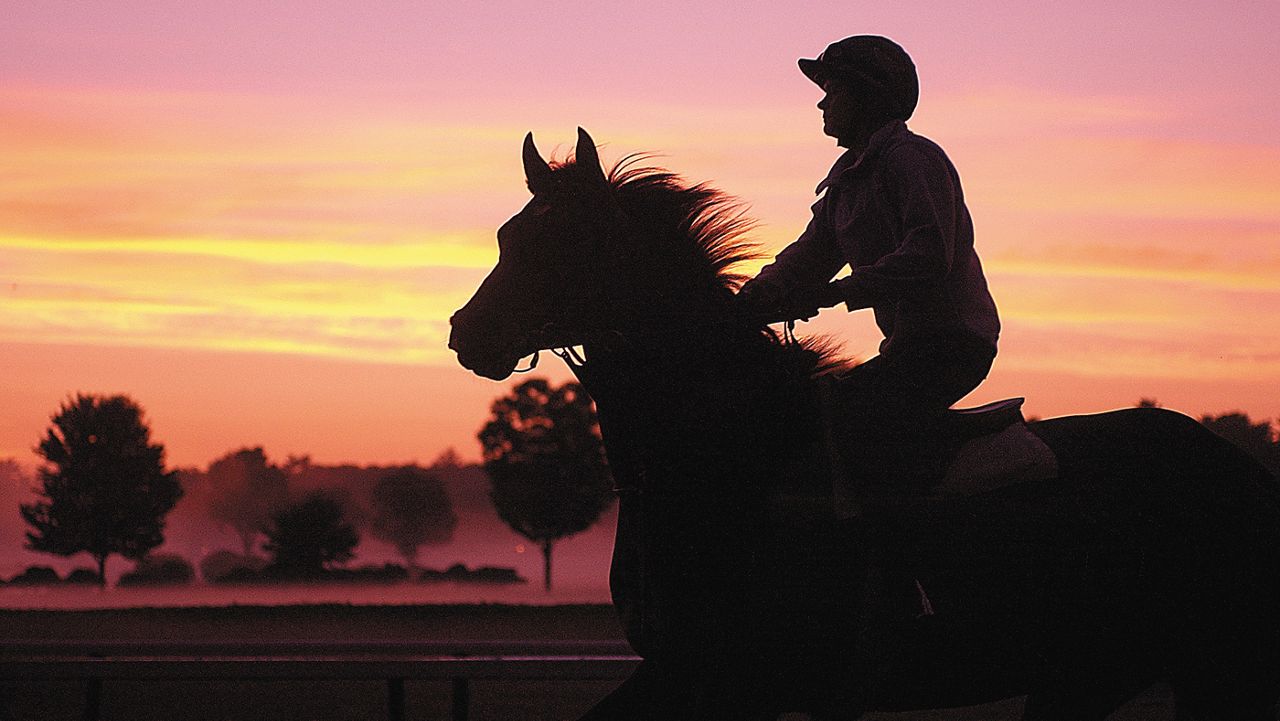There's no horsing around when talking about how the hot weather can affect the strongest of athletes, the thoroughbred.
What You Need To Know
- Thoroughbreds can tolerate big temperature swings and changing weather
- They need extra care in order to keep cool during excessive summer heat
- Horses cool themselves by sweating, but oppressive humidity prevents their sweat from evaporating
- Hot and humid days sometime lead to the annoyance of insect bites, and this can cause disease
While we know thoroughbred horses are strong, sleek and lean animals, hot weather days can affect their performance.
While the horse's natural body processes, like sweating, attempts to cool them in sweltering conditions, heat sometimes overcomes them. Add summer training to the mix and that can exacerbate the situation and lead to heat stress health problems for the horses.
Running a horse during high heat conditions can cause them to lose up to 4 gallons per hour of fluid through sweating. If they exceed a body temperature of 102 to 105 degrees, it could mean trouble. They could suffer a dangerous illness like heat exhaustion or heat stroke.
However, there have been veterinary studies to show how thoroughbreds in the best shape can tolerate hotter weather than other typical pasture or stocky breeds.
Some of the behavioral signs that a horse is overwhelmed by high temperatures are panting, muscle spasms, inflamed mucous membranes, a stumble or total collapse.
In order to keep the horses at a tolerable temperature, trainers take extra precautions on hot days. Through providing a continuous, clean and accessible water source and by adding electrolytes to the water, horses can recover. Holding off vigorous exercise during the hottest times of the day also helps.
There are different methods for cooling horses with water. Hosing down a horse provides some relief, and they prefer the water stream to flow across their back and neck.
Also, caretakers use a cold water sponge and scrape method to keep a cooler layer of water on the skin before a repeat session occurs. Air circulation is quite important as well, both in the barn and outside, so fans or a fresh breeze always helps.
Another annoying issue for thoroughbreds during hot and humid days is horse flies and mosquitoes. Horse flies have painful bites, and mosquitoes bring diseases like encephalitis or West Nile.
You may see horses flapping their tails on their own bodies or standing close to and flapping for another horse to remove the flies.
Caretakers also treat their horses with non-toxic bug spray to repel the pests.
Highly trained caretakers and skilled equine veterinary care experts typically surround thoroughbreds.
Exercise riders train the horses in the early in the day before the races.
The groom's task is to tidy up the stalls, bathe, brush, bandage and feed them.
There is a position called a hot walker, and these folks are the ones responsible for cooling down the horses after their training session.
These title holders have a specific training regimen, and these positions are highly valuable to the industry.
So the next time you see a thoroughbred panting or flapping its tail around, you'll know it is to combat the outdoor elements on a hot summer day!



